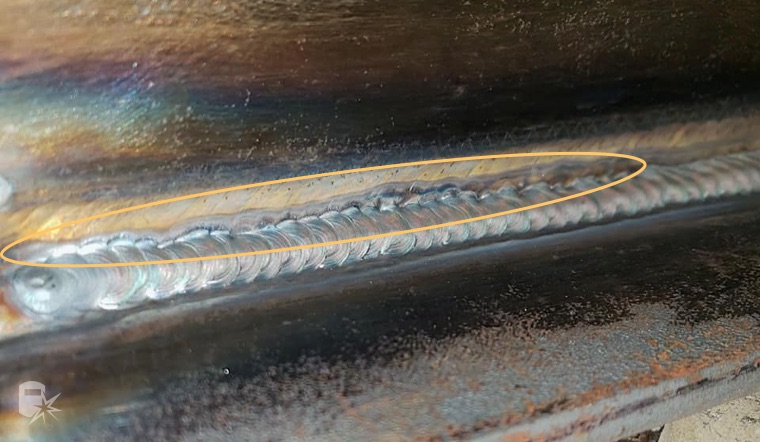Specialist Techniques for Preventing Weld Undercut Efficiently
Wiki Article
Understanding the Causes and Solutions for Undercut Welding in Steel Manufacture Processes
In the world of metal construction processes, the event of undercut welding positions a considerable obstacle that demands an extensive understanding of its reasons and feasible services. The elaborate interplay of different variables during welding procedures can lead to this undesirable phenomenon, affecting the structural honesty and overall high quality of the welded joints - Preventing weld undercut. By studying the root creates of undercut welding and discovering effective remedial procedures, producers can boost the criterion of their workmanship and guarantee the manufacturing of flawless metal elementsCommon Causes of Undercut Welding
Regularly neglected in steel construction, undercut welding occurs as a result of different elements that demand precise attention and expertise to be successfully mitigated. One typical root cause of undercut welding is extreme heat input. When the heat input is as well high, it can bring about the melting and succeeding disintegration of the base product along the edges of the weld joint, creating a groove or undercut. Furthermore, inappropriate welding methods, such as utilizing the wrong welding angle or take a trip speed, can also add to undercut formation. Poor protecting gas coverage is another essential factor that can cause undercutting. Insufficient gas protection stops working to shield the weld swimming pool sufficiently, causing oxidation and undercut defects. Additionally, the choice of welding parameters, such as voltage, current, and cable feed speed, plays a substantial function in the incident of undercut welding. Understanding these common reasons is crucial for carrying out safety nets and making sure premium welds in steel fabrication processes.
Impact of Incorrect Welding Parameters
Imprecise welding specifications can dramatically compromise the integrity and top quality of welded joints in steel construction processes. The impact of wrong welding specifications manifests in numerous ways, resulting in structural weaknesses and issues in the bonded components. One critical aspect impacted by incorrect welding specifications is the penetration depth of the weld. Insufficient warm input because of low welding currents or exceedingly high travel rates can cause insufficient blend between the base steels, leading to insufficient joint infiltration and deteriorated bonds. Conversely, extreme warm input triggered by high welding currents or slow traveling speeds can lead to extreme and burn-through support, producing a fragile and unpredictable weld structure. In addition, inaccurate specifications such as incorrect voltage settings or wrong electrode angles can contribute to unpredictable weld bead profiles, absence of combination, and increased chances of problems like damaging. As a result, careful attention to welding parameters is extremely important to guarantee the manufacturing of premium welds with the preferred mechanical buildings and architectural integrity.Impact of Improper Lantern Angle
Incorrect torch angle in welding procedures can substantially impact the quality and honesty of the last weld joints in steel manufacture processes. Undercutting is a common welding flaw where a groove creates along the weld toe, deteriorating the joint and endangering its structural stability.A lantern angle that is too high can cause inadequate infiltration, insufficient combination, and enhanced spatter. On the my response various other hand, a lantern angle that is also shallow can result in extreme penetration, burn-through, and distortion of the base material. Preventing weld undercut. Correct lantern angle is necessary for ensuring constant weld high quality, toughness, and look
To avoid damaging and various other problems brought on by inappropriate lantern angles, welders need to be educated to keep the proper lantern angle throughout the welding procedure. Routine surveillance and change of lantern angles throughout welding can assist accomplish audio welds with minimal defects.
Duty of Inadequate Welding Techniques

One more facet of poor welding methods is incorrect weld prep work. Insufficient cleansing of the base metals, inaccurate joint style, or not enough side prep work can all go to this web-site add to undercut welding. Insufficient shielding gas protection or utilizing the incorrect kind of gas can result in incomplete fusion and the formation of undercut defects.
To attend to the role of inadequate welding strategies in steel manufacture procedures, it is vital to offer thorough training for welders. Appropriate education on welding specifications, joint prep work, and protecting gas selection can assist avoid undercut welding and make sure top quality welds in steel construction projects.
Reliable Solutions for Undercut Welding
Attending to undercut welding in metal construction calls for executing effective options to improve weld top quality and structural stability. Among the primary remedies to combat undercut is to change welding criteria such as voltage, existing, and travel rate to guarantee appropriate heat input and blend. By fine-tuning these settings, welders can protect against excessive melting of the base metal and filler material, minimizing the likelihood of undercut development.In addition, correct joint prep work is crucial in protecting against undercut. Making certain tidy base metal surfaces without pollutants and making use of the proper bevel angle can aid advertise much better weld penetration and lower the threat of undercut - Preventing weld undercut. Employing appropriate welding strategies, such as oscillating the torch or weaving, can also aid in dispersing warmth evenly and filling up the weld joint sufficiently, straight from the source reducing the opportunity of undercut issues
In addition, choosing the appropriate welding consumables, consisting of electrodes and filler metals, is crucial in mitigating undercut. Utilizing products with suitable chemical make-ups and mechanical residential properties can contribute to attaining sound welds with marginal undercut. Normal inspection and quality assurance steps should also be implemented to detect and address undercut issues quickly, ensuring the total honesty of fabricated steel elements.

Verdict
To conclude, recognizing the reasons and options for undercut welding in steel fabrication processes is essential for accomplishing premium welds. By attending to usual causes such as incorrect welding specifications, inappropriate torch angle, and poor welding methods, welders can prevent undercutting and make sure solid, sturdy welds. It is vital to focus on these elements and execute efficient remedies to enhance the general welding procedure and last item quality.
Report this wiki page